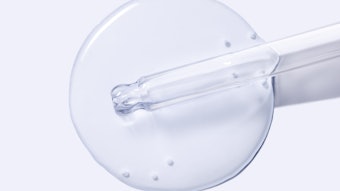
Serving skin care since 1970, the positive effects of azelaic acid were first observed in Rome, when used on the scaly, discolored patches of pityriasis versicolor lesions. When the success prompted further research, scientists found it and put a name to it. It was then later used on malignant melanoma patients as a topical and oral treatment, which resulted in the separation of tumor masses prior to them being surgically removed, as well as improved wound healing. This led to azelaic acid’s approval by the FDA in 1995 for the treatment of acne and rosacea.
Get This Bread
Azelaic acid can be found in natural grains, like wheat and barley, and the yeast, Malassezia furfur, which is commonly found on the skin under the conditions of fungal infections or seborrheic dermatitis. It can also be produced from oleic acid, which is found in olive oil!
Azelaic acid works by targeting bacteria that contribute to acne, and dissolving dead skin cells, effectively clearing away debris on the skin so new cells can replace the old. It also regulates the production of keratin, which is essential for protecting skin, hair and nails. Azelaic acid can also be effective for reducing inflammation and nipping breakouts in the bud. Since it’s great for exfoliating and clearing pores, it’s a key ingredient for improving skin texture. Its anti-inflammatory properties also make it ideal for managing rosacea and its ability to inhibit tyrosinase, which helps produce melanin, makes azelaic acid effective in treating hyperpigmentation. Azelaic acid’s inhibition of the cathelicidin pathway and KLK5 gene expression also contribute to its antibacterial and anti-inflammatory properties.
A Mild-Mannered Ingredient
Azelaic acid is widely considered safe, even for those with sensitive skin and those who are pregnant. The FDA has been moving towards more stringent regulatory measures in recent times, and as such, has recommended a 2-year dermal mouse study as a requirement for formulations once they hit the market. Even under this renewed scrutiny, azelaic acid is unlikely to cause cancer given its simple molecular structure and frequent appearance in our diets.
Some question its efficacy compared to other acne treatments, and for clients with darker skin, there’s the potential for hypopigmentation if used incorrectly, so it’s important to educate clients on how to use azelaic acid products properly. Using azelaic acid treatments in combination with other acne treatments can help maximize efficacy while potentially mitigating side effects.
Azelaic acid comes in a variety of useful topicals like serums, emulsions and creams for whatever suits your clients’ needs. It’s soluble in glycerin and glycol, which makes it a friend to moisture retention and hydration. Since azelaic acid is well-tolerated and mild on the skin, products typically can carry a percentage of 10% on wash-off products and 0.10% in leave-on products. Azelaic acid formulations should be protected from an excess of light and humidity.
Overall, azelaic acid is relatively new to the playground, but tends to play well with others. It’ll serve as a reliable staple for your clients struggling with rosacea, acne and an uneven skin tone and texture, if used properly.










